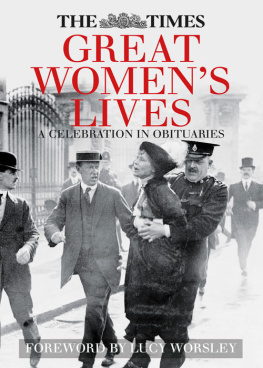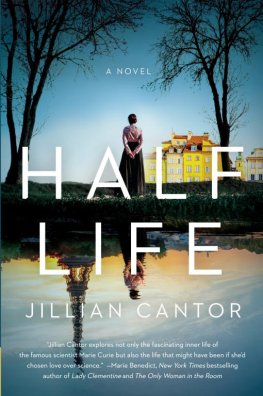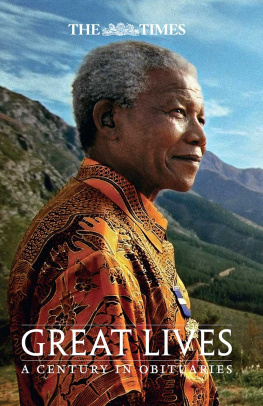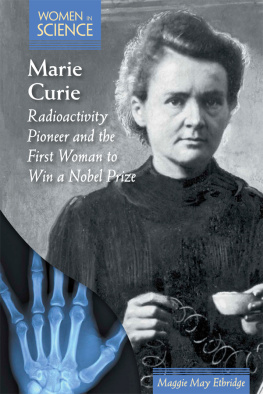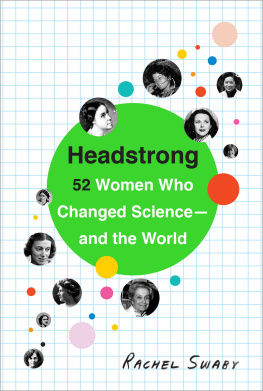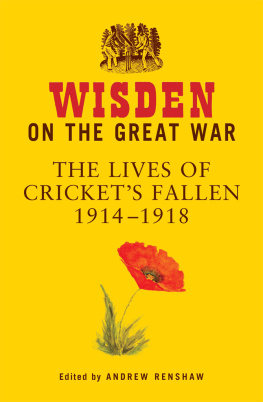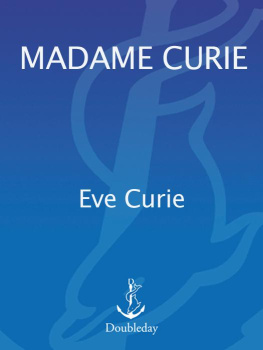
CONTENTS
A GIRLS GUIDE TO GREATNESS
by Lucy Worsley
W hat is it that makes a woman great? The answer, as revealed in these 125 obituaries from The Times newspaper, has changed over time in ways that cant fail to fascinate.
One of the encouraging themes of the collection is that scientists, writers, performers, politicians and campaigners are not born, nor are they made. They make themselves. And a soaring rise from a humble background certainly makes for a good obituary. We learn that Eva Pern, First Lady of Argentina, was a Cinderella in real life to the young people she inspired, and I was tickled to discover that the Labour politician Barbara Castle began her career selling crystallised fruit in a Manchester department store while dressed as Little Nell. A tragic death cutting off early promise also makes for a striking story: aviator Amy Johnson at 37 in 1941; troubled singer Amy Winehouse at 27 in 2011; mountaineer Alison Hargreaves on K2 at only 33 in 1995.
It might not surprise the cynical to discover how important good looks have been to the greatness of women, or at least so it has been in the eyes of their obituarists. The suffragette Christabel Pankhurst, we hear, was a most attractive young woman with fresh colouring, delicate features, and a mass of soft brown hair. Striking looks, constantly mentioned, sometimes had unusual consequences: the blue-eyed Swedish soprano Jenny Lind, for instance, gave her name to a breed of potatoes with blue specks on their skins. The only woman in the whole collection whose looks are disparaged seems to be George Eliot, notable for her resemblance to Savonarola. With all this emphasis on appearance, I dont blame Joan Crawford in the slightest for keeping her birthdate so secret that The Times was only able to give her age at death as falling somewhere in the range between 69 and 76.
And being nice has been just as good as being skilled at what you do. Its a strain that persists surprisingly, and depressingly, far through the collections chronology. Among the earlier subjects, Christina Rossetti produced writing that manifested purity of thought, while it was the happy lot of Elizabeth Garrett Anderson, the first female doctor to qualify in England, to emerge not only successful but still a womanly woman . But when you reach obituaries from the late twentieth century, the convention of the lovely lady persists in ways that read almost like a parody: the crystallographer Dame Kathleen Lonsdale was described in 1971 as looking in no way unfeminine, despite having golliwog hair, and is praised for having made herself a neat hat for a few shillings for a visit to Buckingham Palace. The most successful princesses in history, claims the obituary of Diana, Princess of Wales, in 1997, have been those who loved children and cared for the sick. Not exactly an uncontestable statement.
Because of the same convention of niceness, the early obituaries sometimes have difficulty in expressing what theyre talking about. Philanthropist Baroness Burdett-Coutts founded a Home at Shepherds Bush for single mothers, which was euphemistically described as one of the earliest practical attempts to reclaim women who had lost their characters. Its actually quite hard to puzzle out exactly what Josephine Butler did, so obliquely is it described in her obituary. Shes hailed as a woman of extreme delicacy and refinement of mind, with a horror of contact with vice. In fact she campaigned against the Contagious Diseases Act, which decreed that, on the mere say-so of a policeman, a woman could have her private parts inspected for venereal disease and be imprisoned if she refused.
If you cant be nice, however, be difficult. This theme emerges as the decades pass. Here Bette Davis excelled (Nobodys as good as Bette when shes bad), while the French actress Sarah Bernhardt slept in a coffin and killed her pet alligator by giving it too much champagne. And being angry works, too. Coco Chanel, inventor of the strappy sandal and the cardigan jacket, had a comeback in the 1950s inspired by the irritation of seeing Paris fashion taken over by men designers. Pat Smythe, international showjumper, might have been equally chagrined at being given a silver cigar box for winning a competition with the words: Sorry about this, we were not expecting a woman rider to be as good as you. Being uncommunicative seems an excellent means of finding the time to get on with being great. Elizabeth David, the cookery writer, instructed directory enquiries not to tell anyone her number, under any circumstances, even in case of death, while Barbara McClintock, Nobel Prize-winning scientist, said that anyone who wanted to talk to her could write a letter.
Being on the left politically will definitely help you achieve greatness, because it puts you in the vanguard of struggle and change. We have Red Ellen, the Labour MP Ellen Wilkinson (following the rules about good looks above, she nevertheless had an oddly picturesque person) and the Red Dame, actress and CND supporter Peggy Ashcroft. Movingly, the former Little Nell, Barbara Castle, gets a standing ovation at the Labour Party Conference at the age of 86 even before having reached the microphone.
Most of all, though, its courage thats celebrated here. Courage is what links Emmeline Pankhurst, campaigner for votes for women, who was of the stuff of which martyrs are made, to Odette Hallowes, who had her toenails pulled out during the war for her Resistance work. She shares it too with Marian Anderson, the first black singer to appear at the Metropolitan Opera in New York. Refused tuition at a Philadelphia music school on the grounds that we dont take coloured, Anderson reportedly trembled when she first stood on the stage of the Met. In her own words, though, it was worth it: My mission is to leave behind me a kind of impression that will make it easier for those who follow.
Well, all of these women have done this wonderfully well even the ones with messy hair.
by Sue Corbett
T he 125 Times obituaries of great women in this volume had their genesis in the second issue of the paper, on Monday, January 3, 1785. The Times started life (as the Daily Universal Register ) on Saturday, January 1, 1785, without any obituaries as the modern reader would understand the word. There were, instead, death notices, just two, very brief. By the following Monday, the number had doubled to four, with the addition, this time, of a dash of human interest. Two of the deceased were described as Mrs Alice Hermen, 93, a native of Hanover and nurse to the late Prince Frederic, and Mrs Margaret Scurral, who had retained all her faculties (sight only excepted) till within a fortnight of her death at the even more astonishing age, for that time, of 108.
These two intriguing little Georgian snippets offered a small foretaste of the first golden age of Times obituaries, which still lay decades away in the Victorian era (at the conclusion of which the paper would devote a 49,741-word obituary to Queen Victoria and her epoch). Meanwhile, lengthier obituaries did begin to appear, but haphazardly, so that in 1802 a Lord Chief Justice would receive upwards of 300 words, but in 1822 the death of Percy Bysshe Shelley received no attention whatsoever. Again, in 1825 the Earl of Carlisles death was deemed worthy of an obituary of 327 words, even though the piece itself acknowledged that his lordship never attained any great distinction as a politician, a legislator, an author, or a man of talent, while the novelist Lady Caroline Lambs death three years later was marked by just 125 words that defined her almost entirely in terms of the men whose daughter, sister, wife and daughter-in-law she had been.
Next page
